In addition to CO2 emissions from a company’s own business activities, traditionally classed in Scopes 1 and 2, other emissions fall into Scope 3. On average, these so-called “indirect” emissions account for 75% of a company’s total carbon footprint1. This infographic explains the essentials.
- To measure their carbon footprint, companies have to account for their greenhouse gas emissions in three different “scopes”.
- Scope 1 concerns direct emissions (e.g. from fuel for company vehicles) while Scope 2 covers indirect energy-related emissions (e.g. from electricity consumption).
- Scope 3 covers all other indirect emissions, upstream and downstream of the business, from the extraction of raw materials by suppliers to the end-of-life of products, including transport, distribution and use.
-
1. Extraction of raw materials
The extraction and preparation of raw materials marks the start of a long series of indirect emissions throughout the value chain. This essential stage encompasses extraction of the resources, their primary processing, and their transport to production sites. The emissions come mainly from extraction equipment, initial processing, and the vehicles used by suppliers for transport.
In the case of plasterboard, this means extracting and crushing the gypsum in the supplier’s quarries, making the paper for the facing, and producing the various additives that guarantee the performance of the final product.
To reduce the carbon footprint of this first stage, companies have several levers at their disposal:
- Selecting local suppliers significantly reduces distances for transport. Choosing partners committed to a low-carbon approach, and using renewable energies or innovative processes, makes the positive impact even greater.
- Including recycled raw materials reduces pressure on natural resources and lowers the carbon footprint. The development of dedicated recycling channels ensures a stable supply of quality recycled material.
- Pooling transport between suppliers, switching to rail for long distances, and better supply-chain planning can significantly reduce emissions linked to the transport of raw materials.
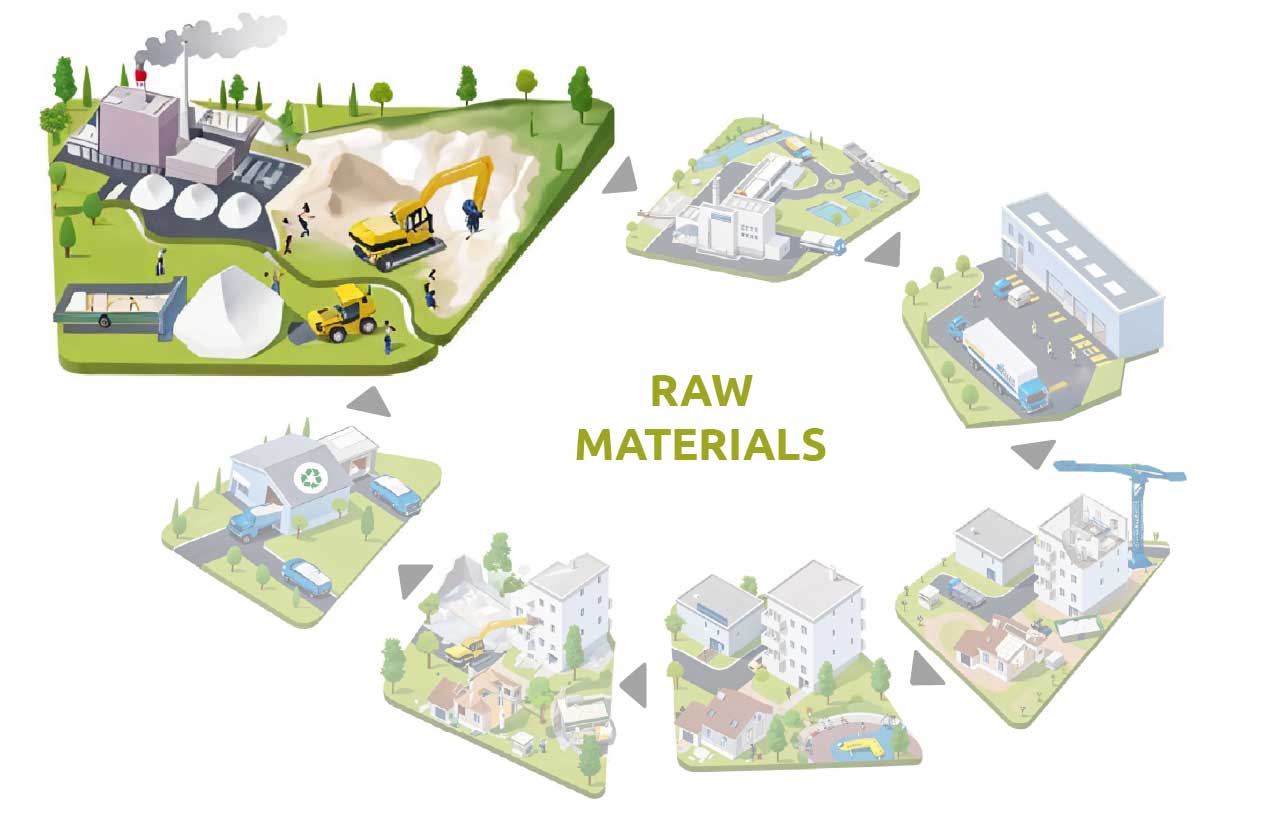
-
2. Manufacturing and processing
Manufacturing and processing generate many indirect emissions in addition to direct emissions from the production process. These Scope 3 emissions come from the peripheral activities required for manufacturing: packaging production, equipment maintenance, industrial waste management, and energy consumed upstream by power suppliers.
For our plasterboard, this mainly means emissions linked to the manufacture of pallets and packaging film, the generation of electricity consumed by suppliers in their processes, and the treatment of production waste. These indirect emissions represent around 79% of the board’s total Scope 3*.
In the construction sector, the manufacturing phase offers numerous opportunities to reduce indirect emissions:
- The eco-design of packaging can significantly reduce its impact, notably by using recycled materials and optimizing its size.
- The choice of more efficient equipment and its preventive maintenance also help to reduce indirect emissions, as does the recycling of production waste through appropriate channels.
- The commitment of power suppliers to the energy transition also plays a crucial role. The development of renewable energies and more efficient distribution grids is helping to reduce the carbon footprint upstream of production.
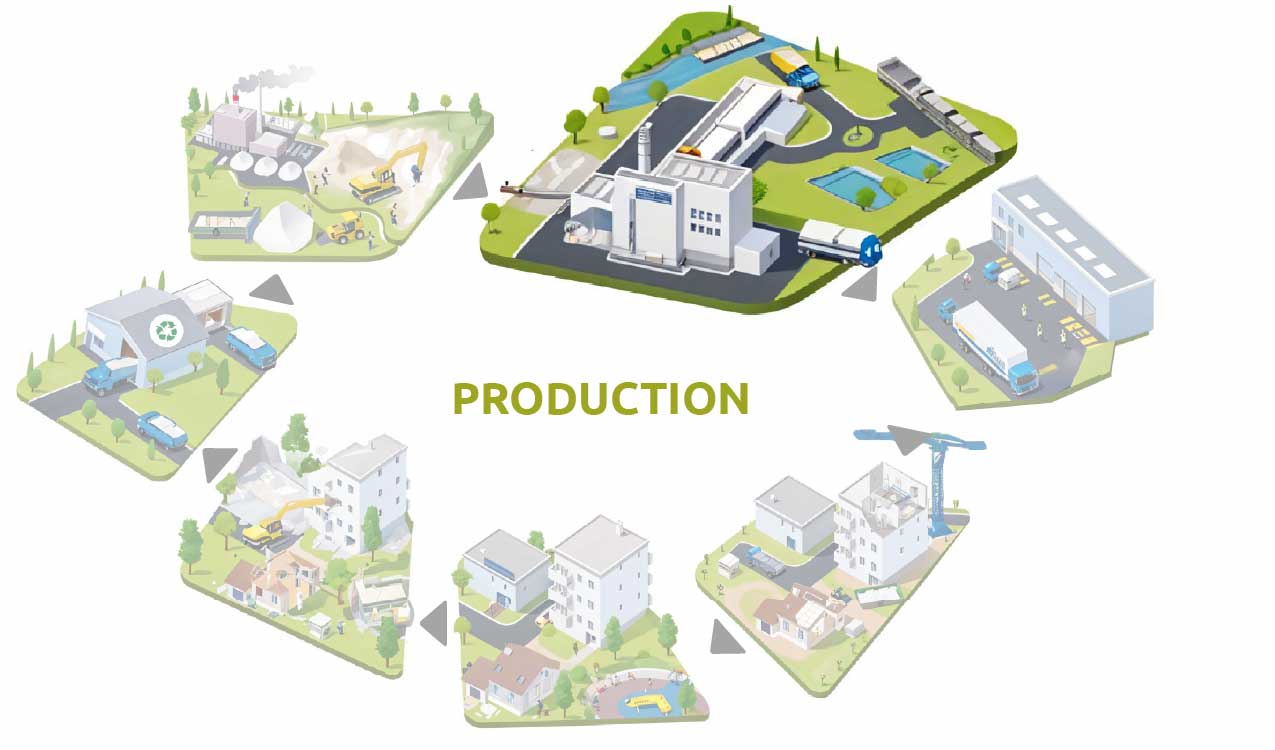
-
3. Transport and logistics
Transport and logistics are a major source of indirect emissions, resulting from transportation by third-party service providers: transport of finished products to distribution centers, delivery to points of sale and building sites, and storage on intermediate logistics platforms.
IIn the case of our plasterboard, this means emissions from the trucks transporting the products from the factories, from the forklifts on the distributors’ logistics platforms, and from the trucks delivering to building sites. This external supply chain generates around 7% of total Scope 3 emissions*.
The transport sector offers several levers for reducing indirect emissions:
- Optimizing logistics flows is the chief solution: optimizing vehicle load factors, pooling flows, and promoting short distribution channels.
- The choice of transport mode represents a second major lever, in particular the switch to rail for long distances. For example, moving 30 t of freight from Paris to Lyon emits 990 kg of CO2 by truck, compared with just 23 kg by train! For final distribution, the use of low-emission vehicles (electric, bioCNG) by transporters can drastically reduce the carbon impact of deliveries.
- Digitizing the supply chain opens up further prospects. Route optimization tools, real-time geolocation and collaborative platforms help avoid empty runs and reduce the distances covered.
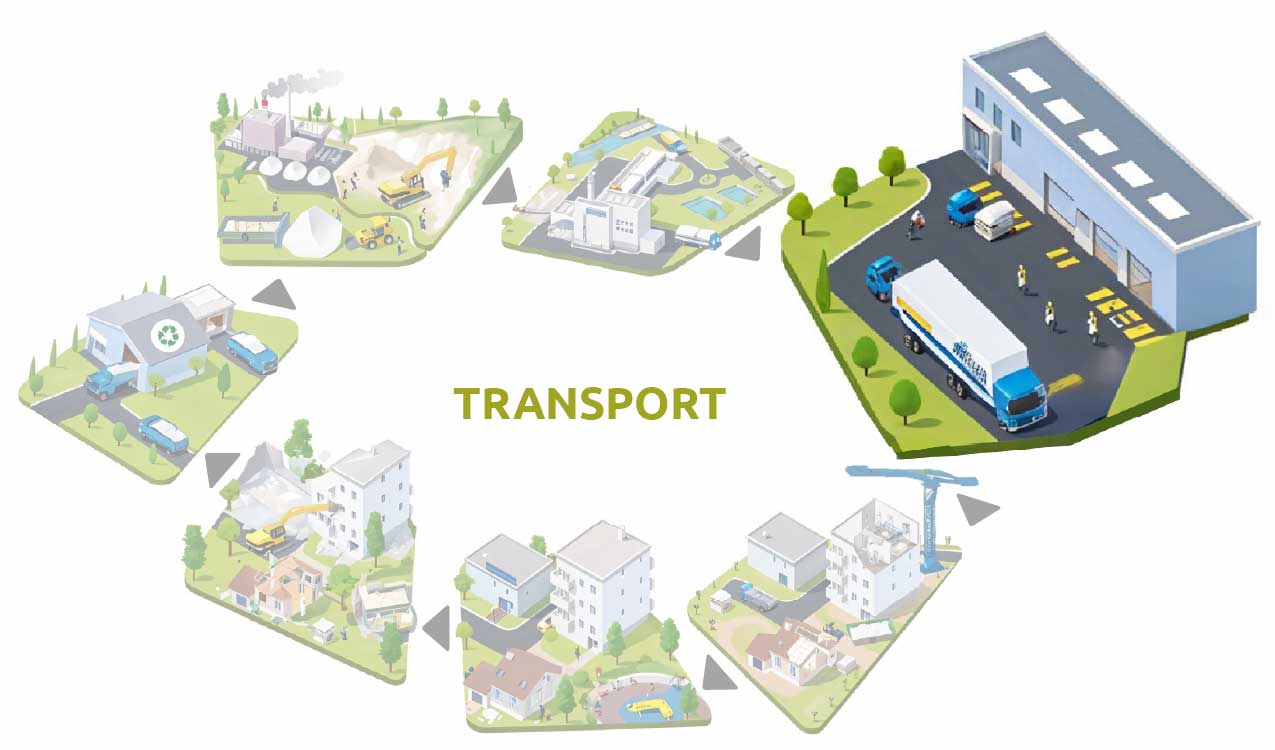
-
4. Installation on building sites
On-site installation generates significant indirect emissions, often underestimated in the overall carbon footprint. These Scope 3 emissions come from the work of installation companies and their subcontractors, who are not under the direct control of the manufacturer. Also included here are emissions linked to the manufacture and transport of ancillary products required for installation (fasteners, seals, adhesives, etc.). The collection and processing of site waste by specialist service providers must also be included.
For our plasterboard, this corresponds to emissions from the power tools used by plasterboard fitters, from the production and transport of jointing products, and from dealing with offcuts. This installation phase accounts for around 10% of total Scope 3 emissions*.
There are a number of concrete actions to reduce on-site emissions:
- Optimizing cutting and off-site construction can significantly reduce waste.
- Training fitters in best practice and using the right tools also improves installation efficiency.
- Sorting and recovering site waste is another major lever, with the introduction of dedicated recycling channels.
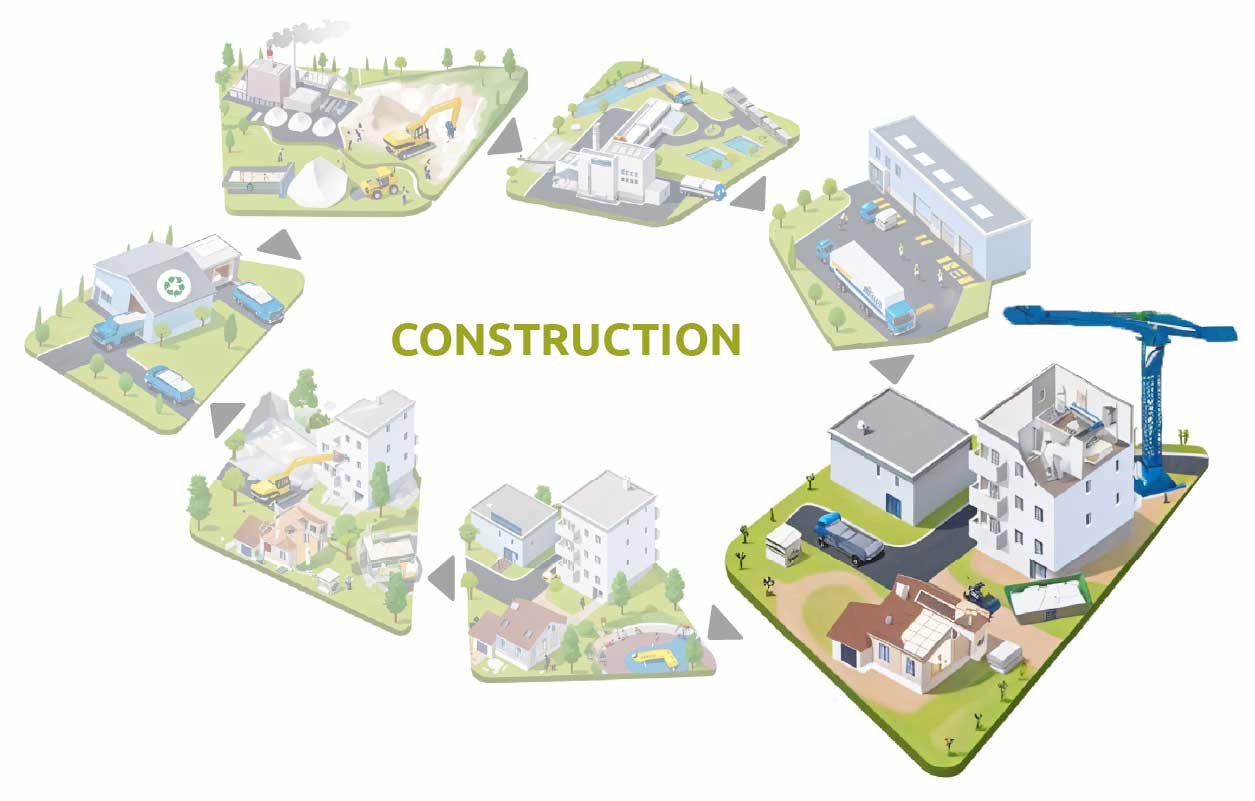
-
5. Use phase
The use phase of a product generates indirect emissions over its entire lifespan, which is often several decades in the construction sector. These Scope 3 emissions come from maintenance, repairs and renovation carried out by occupants or building professionals.
The use of our plasterboard does not directly generate emissions. However, its insulating properties have an impact on the building’s energy consumption. Depending on its thermal performance, it can reduce or increase heating requirements and the associated indirect emissions.
Reducing emissions during the use phase is primarily a question of product durability and ease of maintenance. Improved resistance to impact and moisture reduces the need for repairs. Designing systems that can be disassembled facilitates partial renovation rather than complete replacement.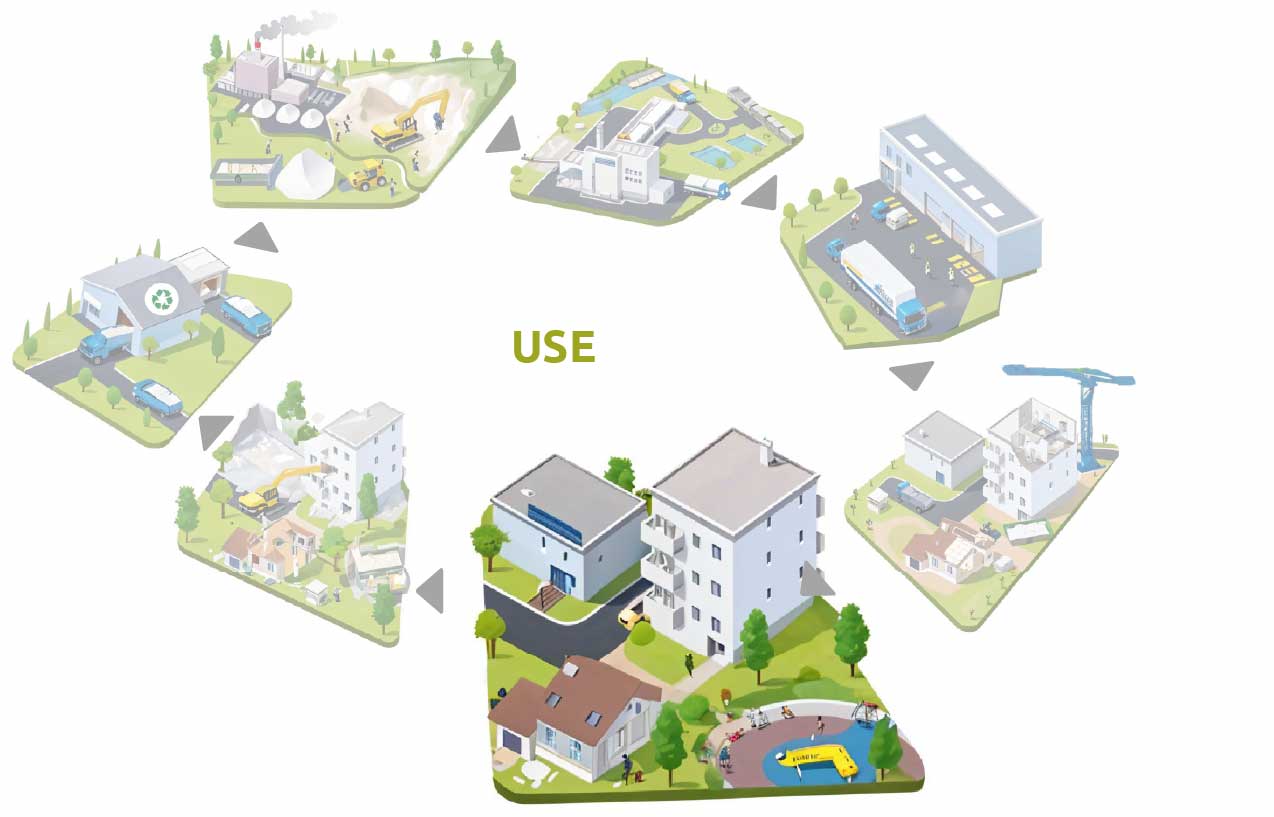
-
6. End-of-life and recycling
Product end-of-life represents a significant source of indirect emissions, involving many external stakeholders in the value chain. These Scope 3 emissions come from demolition, waste transport and treatment in specialist centers.
For our plasterboard, this includes emissions from demolition machinery, trucks transporting waste, and sorting and recycling facilities. In the absence of recycling, storage in specialist facilities generates additional emissions, notably of methane. This end-of-life phase contributes 4% of total Scope 3 emissions*.
Reducing end-of-life emissions is based on two main levers:
- Selective dismantling, rather than demolition, optimizes sorting and facilitates recycling.
- Sending waste to appropriate recycling channels rather than landfill significantly reduces the carbon footprint, as the recycled plaster can be reused in the manufacture of new plasterboard.
- For example, a board made from recycled gypsum consumes 40% less energy than one made from virgin material. What’s more, plaster is infinitely recyclable. Read more
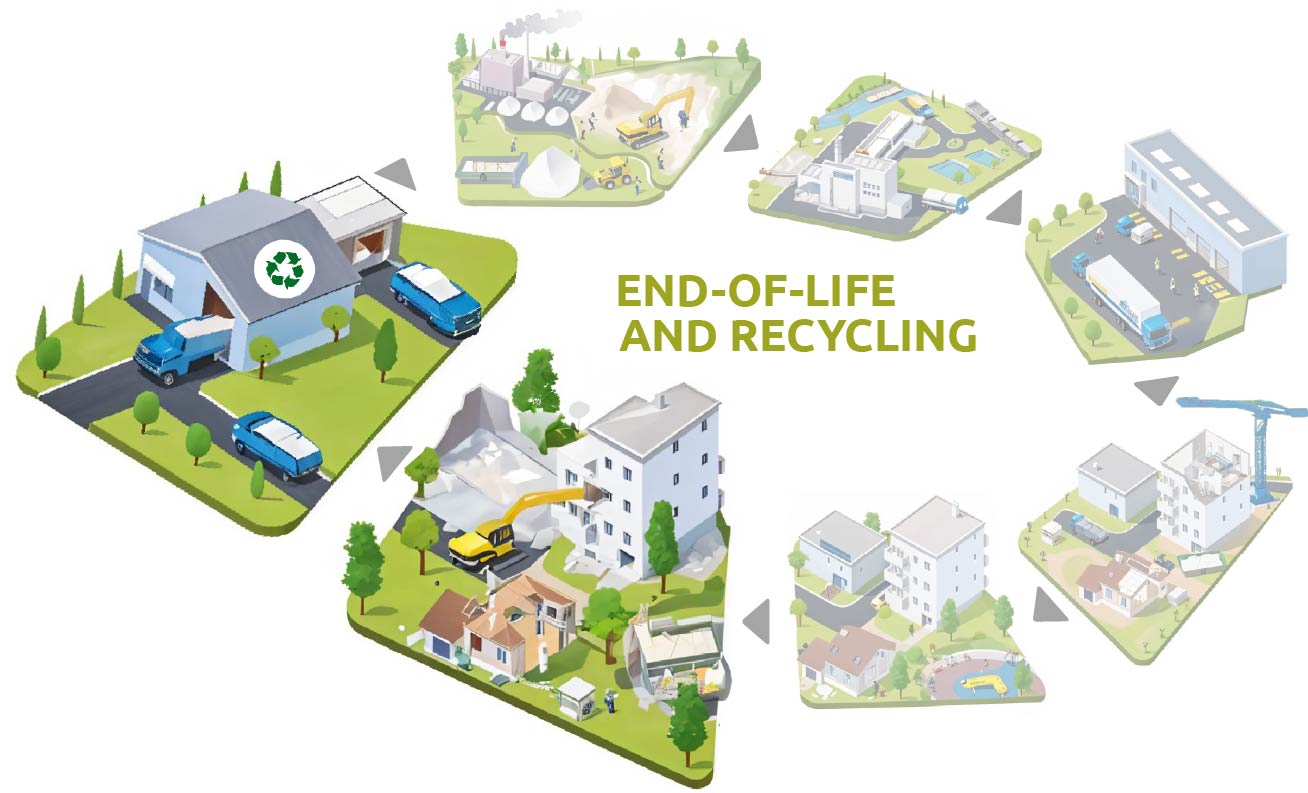
- *Source: FDES 2023 of Placoplatre® BA13 (Environmental and Health Declaration Sheet. This is the environmental identity card of products based on the results of the Life Cycle Assessment (LCA) of a product) / Fossil Climate Change Indicator (refers to climate change of fossil origin).
- Linkedin - Le Gypse : Économie Circulaire et Responsabilité Environnementale dans l’Industrie de la Construction
- placo.fr - Le plâtre, 100% recyclable
- placo.fr - Le gypse, une ressource précieuse
- agypre.com - Enjeux énergétiques environnementaux: Le plâtre
With more than 300 million m² of plasterboard used every year, it has become an emblematic solution in modern construction. Let’s take a look at its life cycle, to better understand Scope 3 emissions.
1 Source : Carbon Disclosure Project (CDP)





